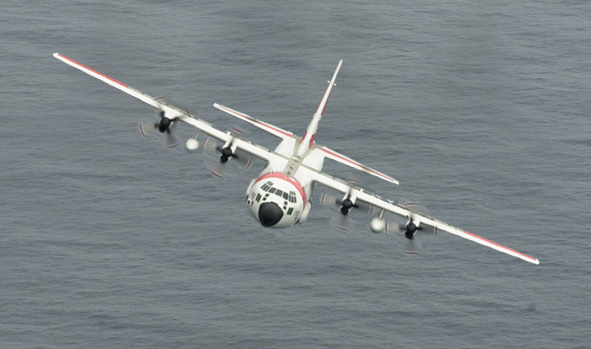Flights Outside the U.S. & U.S. Territories
Flights Outside U.S. Territorial are flights which take place in one more country or international areas.
Introduction
Introduction
- When conducting flights, particularly extended flights, outside the U.S. and its territories, full account should be taken of the amount and quality of air navigation services available in the airspace to be traversed. Every effort should be made to secure information on the location and range of navigational aids, availability of communications and meteorological services, the provision of air traffic services, including alerting service, and the existence of search and rescue services
Flights Outside of the U.S. and U.S. Territories
Flights Outside of the U.S. and U.S. Territories
- Pilots should remember that there is a need to continuously guard the VHF emergency frequency 121.5 MHz when on long over-water flights, except when communications on other VHF channels, equipment limitations, or cockpit duties prevent simultaneous guarding of two channels. Guarding of 121.5 MHz is particularly critical when operating in proximity to Flight Information Region (FIR) boundaries, for example, operations on Route R220 between Anchorage and Tokyo, since it serves to facilitate communications with regard to aircraft which may experience in-flight emergencies, communications, or navigational difficulties
- The filing of a flight plan, always good practice, takes on added significance for extended flights outside U.S. airspace and is, in fact, usually required by the laws of the countries being visited or overflown. It is also particularly important in the case of such flights that pilots leave a complete itinerary and schedule of the flight with someone directly concerned and keep that person advised of the flight's progress. If serious doubt arises as to the safety of the flight, that person should first contact the appropriate FSS. Round Robin Flight Plans to Canada and Mexico are not accepted
- All pilots should review the foreign airspace and entry restrictions published in the appropriate Aeronautical Information Publication (AIP) during the flight planning process. Foreign airspace penetration without official authorization can involve both danger to the aircraft and the imposition of severe penalties and inconvenience to both passengers and crew. A flight plan on file with ATC authorities does not necessarily constitute the prior permission required by certain other authorities. The possibility of fatal consequences cannot be ignored in some areas of the world
- Current NOTAMs for foreign locations must also be reviewed. International Notices regarding specific countries may be obtained through the Federal NOTAM System (FNS) NOTAM Search External Links or the Air Traffic Plans and Publications web site. For additional flight information at foreign locations, pilots should also review the FAA's Prohibitions, Restrictions, and Notices website at https://www.faa.gov/air_traffic/publications/us_restrictions/
- When customs notification to foreign locations is required, it is the responsibility of the pilot to arrange for customs notification in a timely manner
- Aircraft arriving to locations in U.S. territorial airspace must meet the entry requirements as described in AIM Section 6, National Security and Interception Procedures
Flight Over the High Seas
Flight Over the High Seas
- International law recognizes the right of aircraft of all nations to fly in the airspace over the high seas
- By convention, procedures for international flight are prescribed and certain nations have agreed to provide air traffic services in designated airspace over the high seas
- NOTE:
When radar control of fixed-wing aircraft is being provided by a Navy ship or shore station in airspace managed by a FACSFAC, continuous two-way communication is required between that ship or shore station and the FACSFAC. Also the FACSFAC must maintain two-way communication with the appropriate FAA facility as required -
North American Route Program:
- The latest version of Advisory Circular 90-91, North American Route Program (NRP), provides guidance to users of the National Airspace System (NAS) for participation in the NRP
- All flights operating at or above FL 290 within the conterminous United States and Canada are eligible to participate in the NRP, the primary purpose of which is to allow operators to plan minimum time/cost routes that may be off the prescribed route structure
- NRP aircraft are not subject to route-limiting restrictions (e.g., published preferred IFR routes) beyond a 200 NM radius of their point of departure or destination
Conclusion
Conclusion
- Consider:
- Air navigation services available
- Communications and meteorological services
- Air traffic services including alerting and existence of SAR
- The NRP is a tool for route planning purposes and aircraft participating in the NRP remain limited to a route of flight that can be conducted in accordance with the communication and navigation equipment on board the aircraft
- The North American Route Program is a joint venture between the Federal Aviation Administration (FAA) and NAV CANADA
- Still looking for something? Continue searching:
References
References
- Federal Aviation Administration - Pilot/Controller Glossary
- Aeronautical Information Manual (5-1-11) Flights Outside U.S. Territorial
- ICAO Annex 10, Vol II, Paras 5.2.2.1.1.1 and 5.2.2.1.1.2
- Advisory Circular (90-91) North American Route Program (NRP)
- CFI Notebook.net - Air Route Traffic Control Center (ARTCC)
- CFI Notebook.net - Airspace
- CFI Notebook.net - Airways and Route Course Changes
- International Civil Aviation Organization (ICAO)
- Instrument Flying Handbook (1-5) Other Routing
- NAV CANADA
- OPNAVINST 3710.7U Flight Over the High Seas
- OPNAVINST 3770.4 Use of Airspace by U.S. Military Aircraft and Firing Over the High Seas
